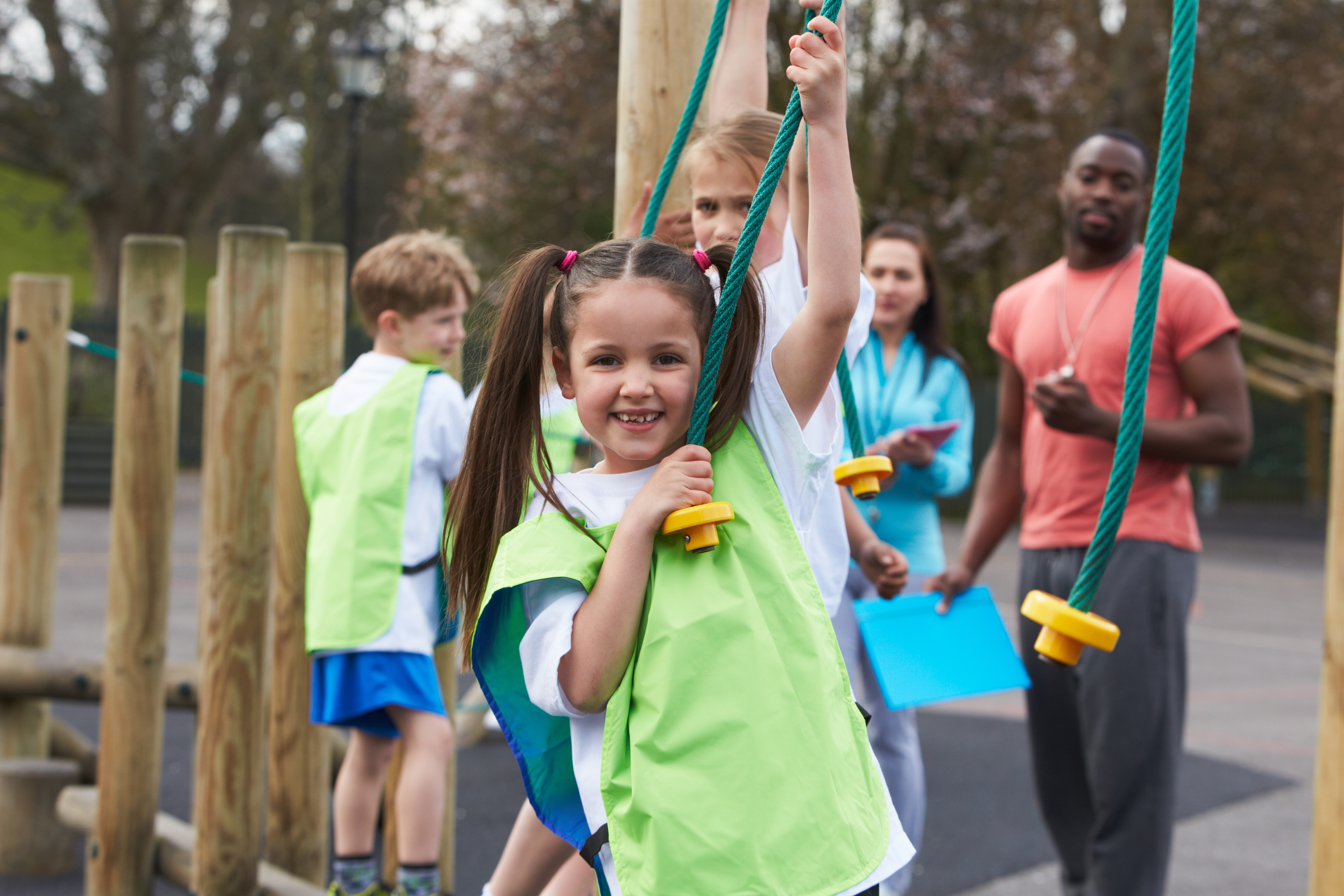Six Tips for a Healthy, Active School Year

Previously published in Volume 81, Issue 2
With the school year well underway, it's a good time for teachers to focus beyond the core curriculum and consider the vital role physical education plays in their students’ learning. To help yourself and your students get the most from the school year, here are some suggestions for providing quality learning experiences with a focus on healthy and active living.
Plan
It sounds simple enough, but plan for quality daily physical education or physical activity. Students spend a long time being stationary and research has shown that frequent bouts of activity help reduce stress, increase concentration, and help with learning. In fact, research has shown that students who participate in physical education more frequently do the same, if not better, in math and language arts than their peers who spend less time in physical education (Sallis, 1999).
Think about safety
Make sure whatever the activity, the area is free of debris, the equipment is in good condition and the students understand and adhere to the rules of the activity. Besides making and having rules of your own, consider including the students in this process. If students are involved in the decision-making process, they become more engaged and connected to the school and the classroom environment (McConnell et al., 2014). Establish and reinforce positive behaviours. Using prompts such as verbal and non-verbal cues, and modeling positive behaviour can go a long way in having
Developmentally appropriate
A must! The developmental approach to teaching physical education is that students progress through stages of development (cognitive, affective, physical). To assist in student learning and succeeding, the teaching and content of the lessons need to be consistently met for each student’s developmental needs. Think equipment, activity, size of area, complexity and number of students participating when planning. Ensure that every student in your class has the opportunity to succeed.
Learning
Simply running around does not promote learning. When planning, consider how students will develop their knowledge, physical skill and positive attitude through the experience. Several curricular models can be considered as well. For example, it can be extremely difficult at times to provide high-quality learning experiences for students due to a variety of reasons such as inclement weather, lack of resources and geographical location (Hickson, Robinson, Berg & Hall, 2012). Because of these and other reasons, physical educators have tried different methods and approaches to providing their students with a variety of best educational practices. Why not involve other classrooms too?
Integrated learning is widely promoted as a best educational practice in which physical education can be on equal footing with other subject areas (Purcell-Cone, Werner and Cone, 2009). Wouldn’t your students love going into the gymnasium during science class to learn about laws of motion and force? Both of these easily connect to physical education with mechanical principals of movement. Are students learning about a different country in social studies? Traditional folk dances can be taught and learned during physical education. Look throughout the year and talk with other teachers on how you can integrate physical education to other curricular areas. For those of you teaching post-secondary, don’t ignore this opportunity either. Integrated learning has been found to be very successful for pre-service teachers as well (Campbell, Berg, Douglas, & Wetterstrand, 2013).
Model healthy behaviour
Understanding the relative contributions of role modeling physical activity and fitness-promoting behaviours towards children has been identified as a potentially powerful influence in promoting physically active lifestyles within society (Cardinal, 2001). Therefore, throughout this school year, get active and be healthy. Teachers possess the unique opportunity to impact students in a positive manner every school day (Vidourek, et al., 2011). So, in what ways do you intend to role model? Consider walking with your class during lunch hours, dressing in active wear when teaching physical education time, eating healthfully and being present in the lesson, just to name a few options. Bradford, Hickson, & Evaniew (2014) state that teachers can show students that they truly care about their learning by engaging in the learning process. Similarly, “Students will advocate either for or against physical education, and that outcome is largely contingent on the caring education that teachers of physical education provide,” (Rikard, 2009). So, let’s all remember to role this school year. After all, students do perceive their teachers as a source of information and inspiration!
Have fun
Learning is first and foremost when it comes to physical education, but who says you and your students can’t enjoy the process? Consider special themes such as the Olympics, and plan for activities revolving around certain times of the year such as Halloween, Christmas/Hanukkah or Valentine’s Day. Having a variety of activities planned throughout the year keeps classes interesting and students engaged.
If you take into consideration these six simple tips, your students (and you) will have a positive, healthy and active school year!
References
Bradford, B.D., Hickson, C.N., & Evaniew, A.E. (2014). Role modeling: The forgotten part of elementary school physical education. Journal of Higher Education Theory and Practice. 14(5), 18-23.
Campbell, R., Berg, S., Douglas, S., & Wetterstrand, G. (2013). Integrating teaching with trans-curricular problem scenarios. Paper presented at the Canadian Society for the Study of Education’s Annual Conference, University of Victoria, June 1-5, 2013.
Cardinal, B.J. (2001). Role modeling attitudes and physical activity and fitness promoting behaviors of HPERD professionals and preprofessionals. Research Quarterly for Exercise and Sport. 71(1), 84-90.
McConnell, J., Frazer, A., Berg, S., Labrie, T., Zebedee, J., & Naylor, P.J. (2014). Got health?: A student-led inquiry youth engagement project. Journal of Child and Adolescent Behavior, 2(4), DOI 10.4172/jcalb.1000153
Purcell-Cone, T., Werner, P., & Cone, S.L. (2009). Interdisciplinary elementary physical education (2nd Ed). Champaign, IL: Human Kinetics.
Rikard, G. L. (2009). The significance of teacher caring in physical education. Journal of Physical Education, Recreation, & Dance. 80(7), 4-5.
Sallis, J.F., McKenzie, T.L., Kolody, B., Lewis, M., Marshall, S., & Rosengard, P. (1999). Effects of health-related physical education on academic achievement: Project SPARK. Research Quarterly for Exercise and Sport, 70(2), 127-134. DOI: 10.1080/02701367.1999.10608030
Vidourek, R.A., King, K.A., Bernard, A.L., Murnan, J., & Nabors, L. (2011). Teachers’ strategies to positively connect students to school. American Journal of Health Education. 42(2), 116-126.









